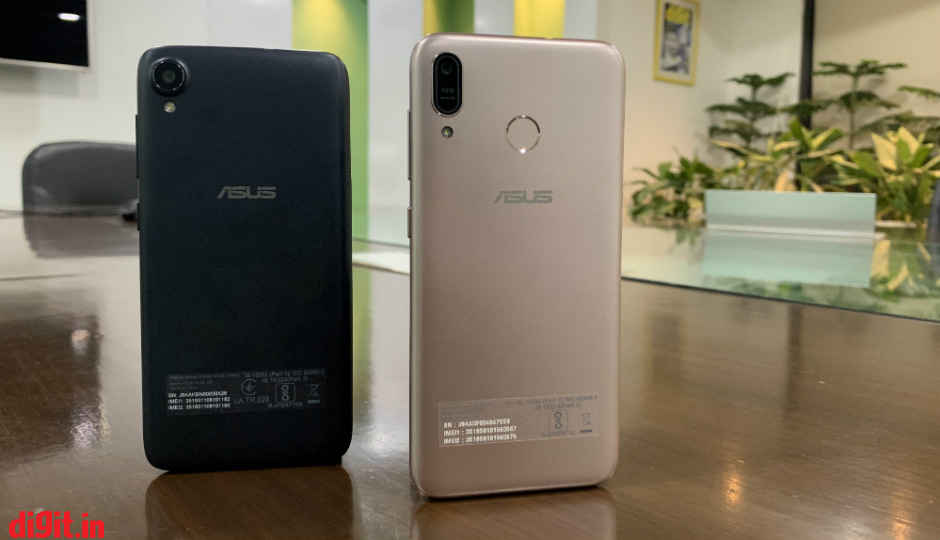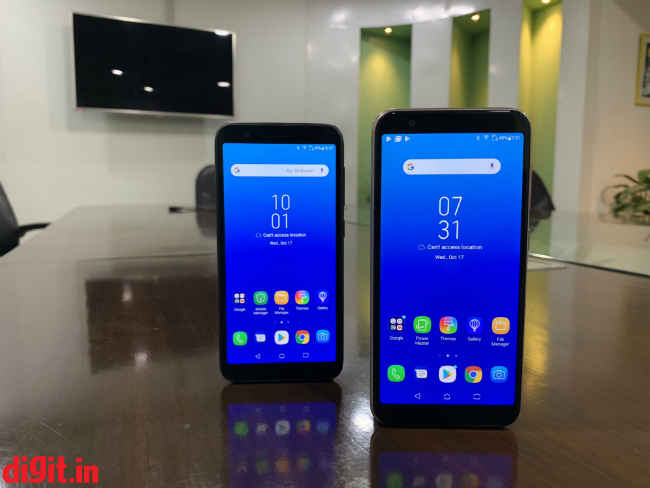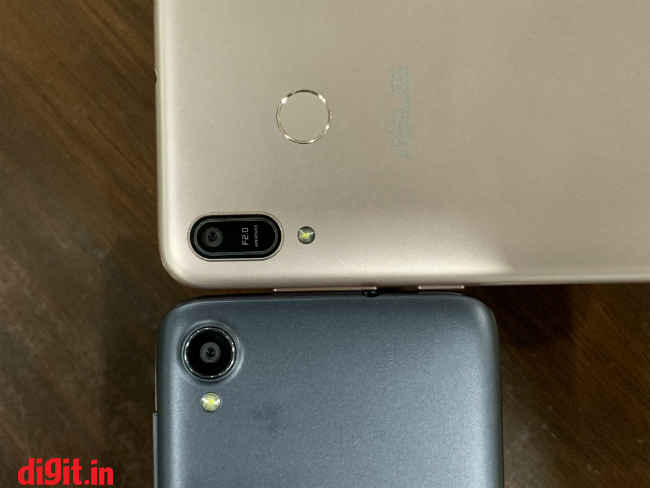First Impressions: The Asus Zenfone Max M1 and the Lite L1 offer good value for money, but aren’t segment-leaders
The Asus Zenfone Max M1 and the Zenfone Lite L1 not only keeps the price competitive, but it also attempts to dominate in the spec-sheet.

Asus announced two new phones in the Zenfone lineup to take on the budget segment. The Zenfone Max M1 and the Zenfone Lite L1 are priced Rs 6,999 and Rs 8,999 respectively, aimed at those with a tighter budget. The pricing also indicates the phones will be competing fiercely against the Xiaomi Redmi 6 and the Redmi 6A, along with the Realme 2 and the Realme C1. Needless to say, with the new Zenfones now out in the market, buyers are spoilt for choice. The timing is right as well, with the holiday season about to start.
 Survey
SurveyThe Asus Zenfone Max M1 and the Zenfone Lite L1 not only keeps the price competitive, but also attempts to dominate in the spec-sheet. Both smartphones are powered by the octa-core Snapdragon 430 chipset, where Xiaomi is relying on MediaTek chips for the first time in a long time. On the other hand, new entrant Realme is using the Snapdragon 450, a relatively more powerful processor than the SD430.
The spec-sheet and the price both play a decisive role in choosing a budget phone and the new Zenfones play by the book. Both have no-nonsense designs — Metal finish, taller 18:9 displays and single cameras. Both the Zenfone Max M1 and the Zenfone Lite L1 have compact form factors. There’s very little separating the two apart from some minor design tweaks here and there. Both in fact, sport the same displays. The primary difference are the cameras on the two phones. To make the Zenfone Lite L1 more affordable, Asus has used a single lens camera while on the Zenfone Max M1 there’s a dual camera unit.
The 5.45-inch IPS LCD panel on the phones also look bright and vibrant, a little more so than the Redmi 6A, I felt. The Max M1 even has a 2.5D-shaped glass on top that protects the display. Both panels have a contrast ratio of 800:1 which is relatively higher than what budget phones usually provide, and perhaps that’s why the panel looks richer. There are single mono speaker, bottom firing which did sound quite loud in a quiet cabin. Asus promises a cinematic experience but you should probably keep the expectations in check.
The phones themselves are housed in a metal chassis and come in two contrasting colours. Both phones encompass the form-factor of 5.0-inch phones but packs a larger 5.45-inch panel. The phones aren’t anything like the Realme C1 and the Realme 2 though with their glass-sandwich designs, but they are certainly sturdier. The Zenfone Max M1 and the Zenfone Lite L1 do look a lot like the Xiaomi phones though.
There’s no fingerprint sensor on the Asus Zenfone Lite L1, but there’s face unlock, which isn’t as secure. Further, the Asus Zenfone Max M1’s Snapdragon 430 SoC is paired with 3GB of RAM and 32GB of storage, while the Zenfone Lite L1 only offers 2GB RAM and 16GB storage. That’s the same as what other budget phones provide and isn’t something we’d recommend to buy as the storage is just not enough to house all the essential apps you need. Asus does provide a dedicated slot for a microSD card and 100GB of Google Drive storage, so you at least have these options if you are running out of storage a lot. The Zenfone Max M1 also has a 6GB variant but that’s not going to be available in India yet.
Both phones rely on Asus’ ZenUI 5.0 based on Android 8.0 Oreo. There was no word on whether the phones will receive the update to Android P, though. It is more or less expected in the Xiaomi Redmi 6A and the Redmi 6. MIUI 10 will be rolled out to the devices soon enough. The UI is kept as near to stock Android as possible. There’s very little bloatware and those are just Facebook, Messenger and Instagram. They can be uninstalled, and you may want to install the Lite versions of the apps to keep things smooth.
Apart from the price and the hardware, the camera quality is also quite decisive in choosing a budget phone. The Zenfone Lite L1 has a single 13MP lens that are decent for the price. It can shoot HDR photos, panorama and implement live filters. No portrait mode though. On the front, Zenfone Lite L1 has a 5MP front camera that is paired with a LED flash beside it. The 5MP sensor can take portrait selfies though, but that’s software-based. As such, the portraits are unevenly blurred and look photoshopped.
The Zenfone Max M1, on the other hand, tout dual cameras on the back. The primary 13MP sensor has f/2.2 aperture while the secondary 5MP sensor with f/2.4 aperture acts as a depth sensor. The camera focuses fast enough and the shutter is also relatively fast. It can take portrait shots that are at least better than the Asus Zenfone Lite L1.
Further, the Zenfone Max M1 rounds it off with a 4,000mAh battery that supports fast charging. A good battery life is something quite crucial in my opinion, in any price segment and the Max M1 promises two days worth of charge. The Zenfone Lite L1 on the other hand rocks a 3,000mAh battery.
Overall, the Zenfone Max M1 and the Zenfone Lite L1 aren’t really segment-leading in terms of the spec sheet. But it remains competitive against its rivals with commendable hardware, offering good value for money. But that’s just the initial impressions. We’ll be testing the devices out thoroughly for an in-depth review, so stay tuned for that.

